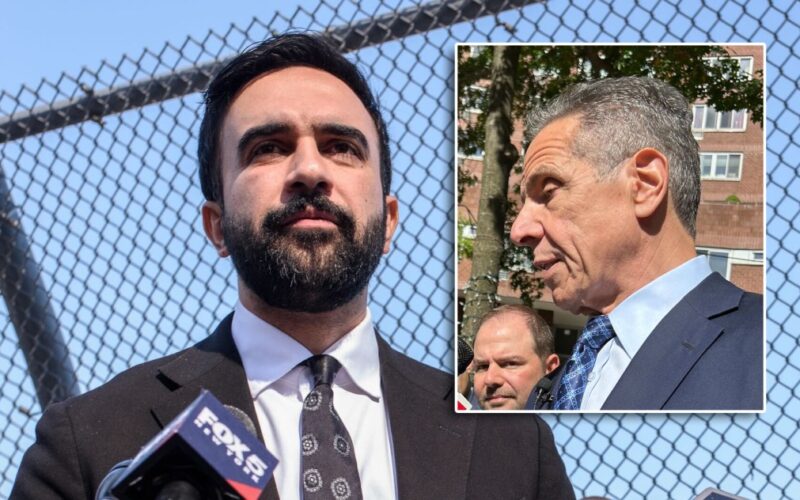Democratic front-runner Zohran Mamdani’s foray into the future of Gifted and Talented programs this week reignited a heated controversy over the popular program in New York City public schools that carves out a separate learning track for select students.
Despite New York’s standing as the nation’s largest public school system, up until a few days ago the mayoral race so far had largely glossed over educational issues, save then-candidate Mayor Adams’ controversial statements about bathroom use by transgender students.
But Mamdani unleashed a contentious debate over gifted programs with a pledge in a candidate survey on Thursday to end admissions to the program for kindergarteners.
Mamdani’s opponents seized on his answer — quickly.
The next morning, Andrew Cuomo, the former governor and independent candidate for mayor, joined an Asian American political club to announce a plan to expand gifted programs across the five boroughs, responding to demand.
For this fall, schools made about 2,500 offers to current kindergarteners, out of close to 10,100 applicants, according to education data. Another 1,100 seats are set aside for students entering gifted programs in the third grade.
By Friday afternoon, Curtis Sliwa, the GOP nominee, spoke with reporters outside P.S. 9 Sarah Anderson on Manhattan’s Upper West Side, pledging to double the number of gifted programs citywide to over 200, according to his campaign.
“He’s thrown red meat to the Cuomo and Sliwa campaigns over the entire question of meritocracy,” said David Bloomfield, a professor of education law and policy at Brooklyn College and the CUNY Graduate Center.
“It seems to be one of his rare strategic blunders where he was, on at least education, playing a ‘Rose Garden’ strategy,” Bloomfield added. “And now, he’s opened with a particularly controversial proposal.”

It’s not a new debate.
For years, New York City was unique in that it tested children on accelerated learning as early as preschool. Former Mayor Bill de Blasio started to phase out the program at the end of his second term, and when Adams took over and expanded the initiative without an exam in place, he replaced it with a lottery based on teacher nominations that have helped narrow racial divides.
Despite the progress, gifted classrooms still do not represent the broader school system. Just 24% of students in the program were Black or Hispanic during the 2023-24 school year, according to the school system’s latest diversity report, compared to nearly 70% that were white or Asian American.
But gifted programs remain popular among parents who fear their advanced students will not be challenged in most classrooms, and the families who can afford it will flee for greener pastures in private schools or the suburbs.
“NYC’s Gifted and Talented programs serve thousands of students in all five boroughs, providing the rigorous curriculum necessary to challenge and nurture their potential from an early age,” said Yiatin Chu, co-president of Parent Leaders for Accelerated Curriculum and Education (PLACE NYC). “Eliminating them does not promote equity; it erodes merit-based education.”
Days after Mamdani’s comments, PLACE on Saturday endorsed Cuomo for mayor, citing his plans for Gifted and Talented as part of their rationale.
Mamdani’s opposition to gifted programs in the early grades was first revealed in a questionnaire in The New York Times.
“I was asked a question about kindergarten, and whether I thought children at that young of an age should be separated on the basis of an assessment, and I said ‘No, I don’t think that should be the case for those kindergarteners,’” Mamdani told reporters at an unrelated press conference on Friday.
“I continue to believe that it is incredibly important for us to deliver excellent, quality public education for each and every New Yorker, and that for kindergarteners, we should not have a Gifted and Talented program that is separated on the basis of assessment.”
No current students would lose access to their programs, and prospective families would still be able to apply for the third grade, according to the Democratic nominee’s campaign.
James Borland, an education professor at Columbia University Teachers College who studies gifted education, said Mamdani’s steps were in the “right direction” by raising the age of students who enter gifted programs.
“Kids whose parents can do so can really afford to give them a leg-up when it comes to admissions in kindergarten, where so much of the kids’ experience to date is based in the home and reflects the inequities of our city,” said Borland, adding that public schools, while not perfect, “mitigate the differences the kids bring to school with them from their families’ circumstances.”
“It’s much easier for me to preach from the Ivory Tower than for people in schools to actually do it,” Borland said. “In the ideal situation, we’d have classrooms [where] kids of varying needs would have their needs met. We wouldn’t have to have Gifted and Talented classes.”
Matt Gonzales, a former member of a school diversity advisory panel under de Blasio, noted that students in gifted programs represent just 2% of all kindergarteners citywide.
“For me, I’m interested in the entire system,” said Gonzales, who is also an education researcher at New York University. “The majority of New York City students — the vast majority — are not participating in [gifted] models.”
“I think it’s the right direction — I think it coming out in this way is only going to stir up controversy.”
With Evan Simko-Bednarski, Chris Sommerfeldt and Josephine Stratman








